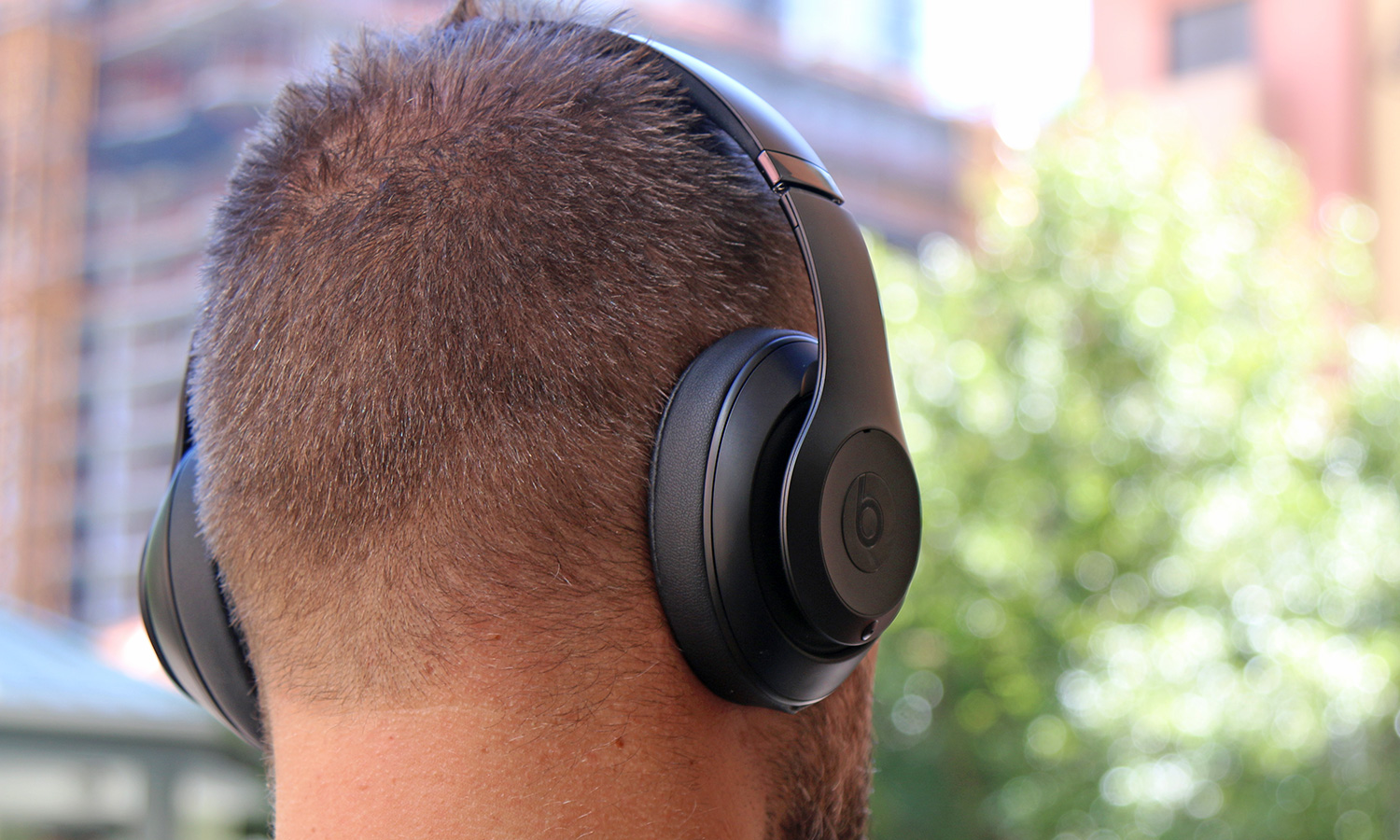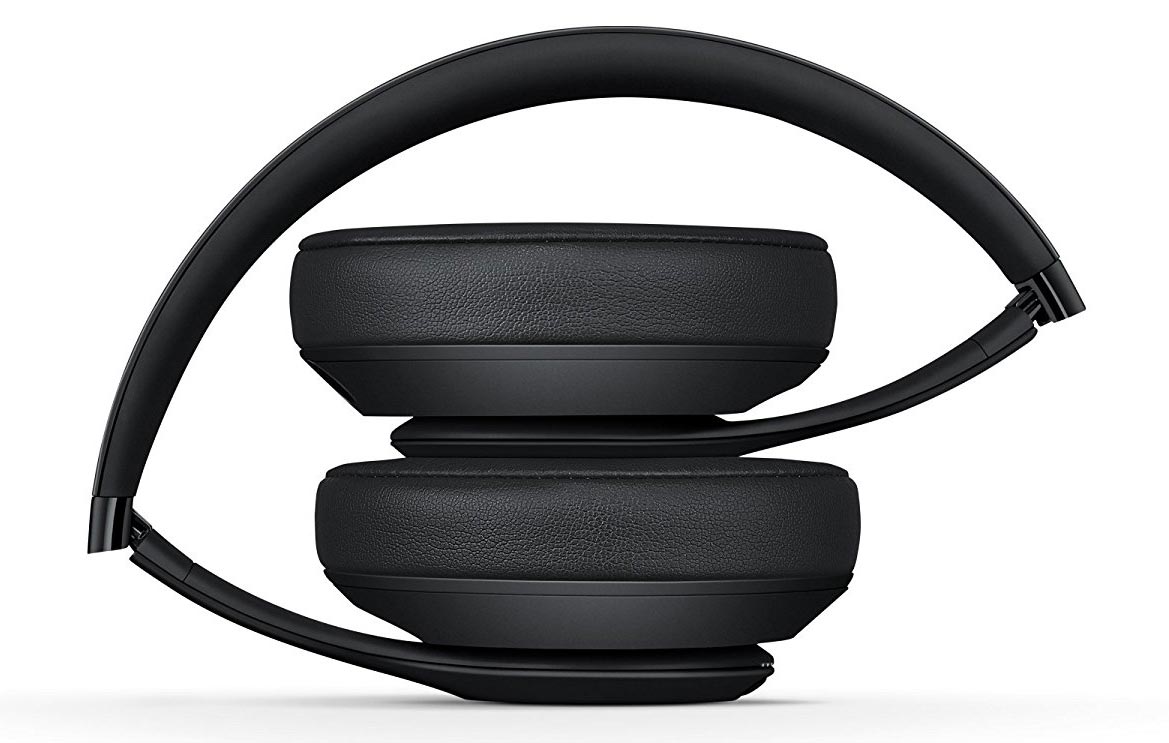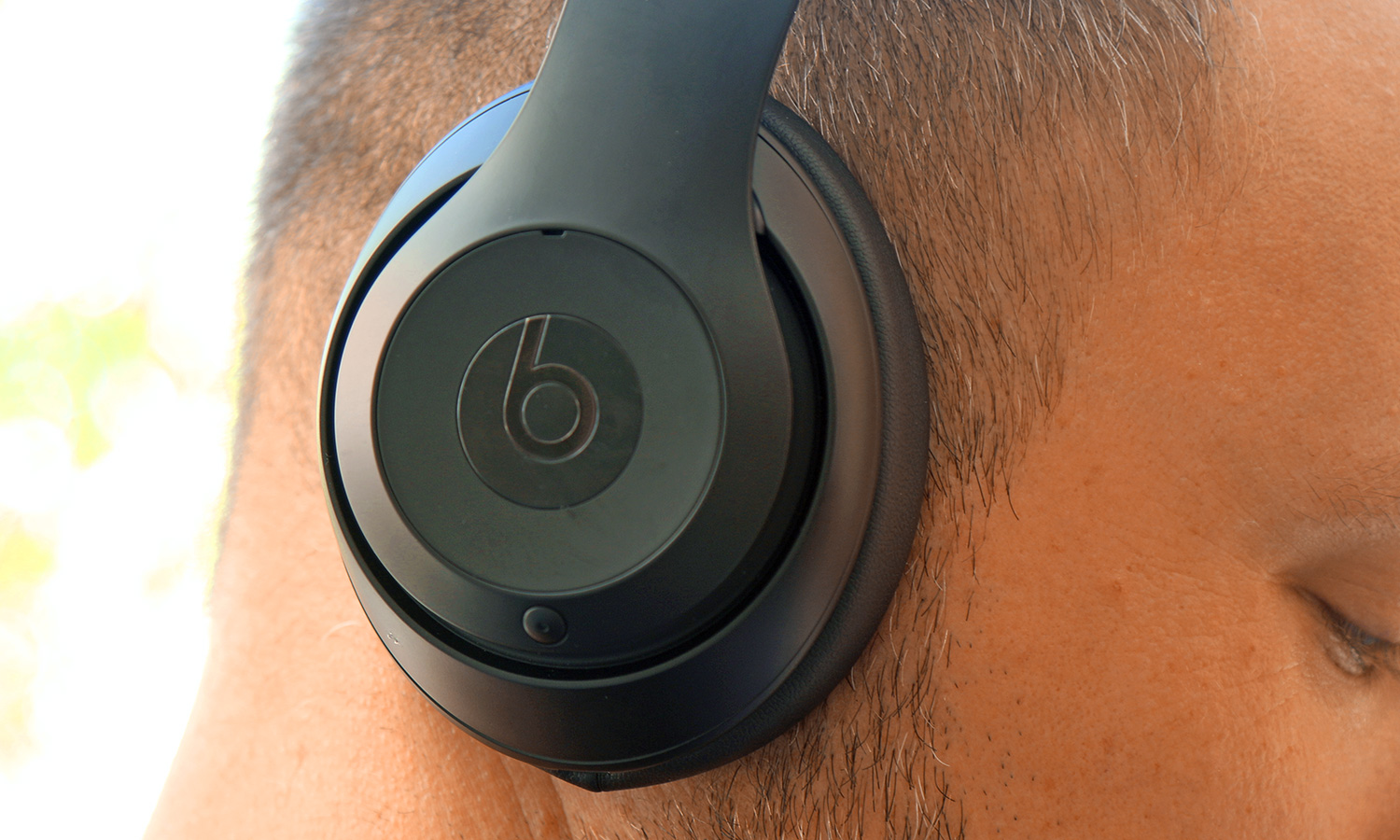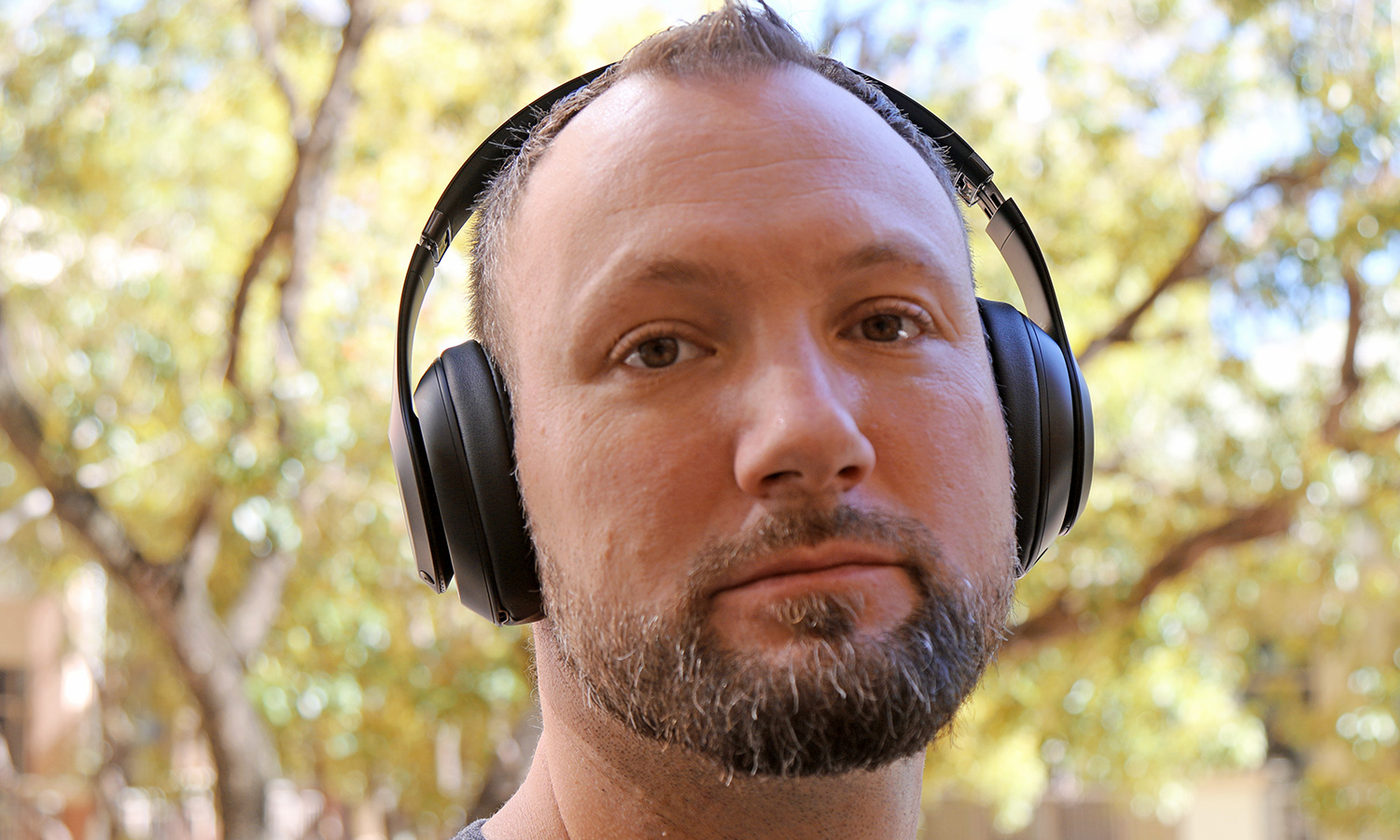Tom's Guide Verdict
Beats Studio3 Wireless Headphones offer a comfortable fit, decent active noise cancellation and clean, though a sometimes overly processed, sound profile.
Pros
- +
Comfortable Fit
- +
Quick Charging tops up battery in 10 minutes for 3 hours of listening
- +
Stabile connection over large area
- +
Solid bass performance for bass heavy tracks
- +
Offer extra volume over other headphones
Cons
- -
Known pairing issues with Samsung S7
- -
Lack of audible notifications for pairing mode and power toggle
- -
Expensive
Why you can trust Tom's Guide
Hurry! Beats Studio3 headphones are nearly 50% off before Prime Day
The $279 Beats Studio3 Wireless offer listeners a comfortable pair of over-ear headphones with decent sound and active noise-cancelling performance. Once connected, they provide stellar range with virtually no dropouts, while quick-charge technology adds 3 hours of playback with only 10 minutes on the charger. The 22 hours of playback with ANC turned on or 40 hours with it turned off is impressive, thanks to Apple’s new W1 chipset and redesigned electronics. But known pairing issues with certain phones and lack of audible notifications when switching between modes prevent the Studio3 from earning a higher score.
Design
From the outside, the Studio3 headphones look pretty similar to the 2014 Beats Studio Wireless. They are constructed mostly of plastic on both the ear cups and the outer headband, but have a fairly sturdy metal band underneath, allowing 10 steps of adjustment on each side. I used the smallest setting that was comfortable, but the largest was so big the headphones nearly fell off my head.

The headphones come in six colors, including white, pink and gray, but I got my hands on the matte black model. It's an ideal choice if you want to blend into your environment rather than stick out with the more eye-popping candy-apple red or bright blue.

As always, Beats are packaged quite nicely and come with a fairly durable protective case, which is bulkier than competing models -- so much so you might have a problem getting it comfortably into a small backpack. I preferred the Audio-Technica ATH-ANC9's case, which lays flat allowing for easier packing. The headphones also come with a charging cord, as well as an audio cable to allow you to plug into non-wireless sources, which came in quite handy while testing.
The left exterior ear cup is where the smart controls reside. On the bottom of the outer ear cup is a single indicator light that turns on or off to show the status of the ANC function.

The right outer ear cup has a multifunction button on the bottom that has a single white light in its center to show that the headphones have power. Below the button are five white indicator lights to both show battery level when the headphones turn on and slowly pulse when put into pairing mode. At the very bottom of the right ear cup, touching where the outer plastic meets the synthetic leather ear cup is the micro USB charging port.
Comfort and Fit
I wore the Studio3s over the course of two weeks for between 3-4 hours at a time in relative comfort due to the plushy ear cups and the adjustable headband. I wore them at the smallest setting, and they were quite adequate, so people with larger heads should get a comfy fit as well. The Beats weigh in at 9.2 ounces, while the Sennheisers are a tad lighter at 8.4 ounces.

I wore the Studio3s over the course of two weeks for between 3-4 hours at a time in relative comfort due to the plushy ear cups and the adjustable headband.
The interior of the ear cups are made from thick padding wrapped in soft synthetic leather and plenty of padding for longer listening sessions, while the inside of the headband is coated with a soft rubbery material similar to the Sennheiser 4.50 BTNC. They aren't as cushy as some, but they should be comfortable while keeping the headphones in place.
Setup
Connecting the Beats Studio3 Wireless to my iPhone 6s was effortless -- it took less than 2 seconds to get connected. With the slew of Android phones, it was just as easy to connect to the Pixel 2, Samsung Galaxy S3 and S5, though those phones took one or two extra seconds to pair. Before using the Pixel 2, I had relied on the Samsung Galaxy S7 as my main phone, which simply would not pair no matter what I did, including enlisting Apple’s customer service and engineering departments for help.
The power on/off and pairing procedure is a bit quirky and leaves something to be desired from a notification standpoint. Pressing and holding the small button on the bottom of the right ear cup turns the headphones on and, if held for an extra second, puts the headphones into pairing mode. However, unlike most headphones that greet a user with a welcoming chime or voice when turned on, as well as an indication of pairing mode, these headphones do no such thing. To make sure they were on and in pairing mode, I had to take the headphones off and look at the white indicator lights that turn on and then begin pulsing when in pairing mode.
MORE: Best Headphones and Earbuds for Enjoying Music
Once powered on, pressing this button two times in rapid succession toggles the active noise cancellation (ANC), indicated with an ascending or descending pair of "bonks." Holding this button also turns the headphones off, but there is only an echoing sound effect trailing off indicating the headphones are no longer paired. If my phone was not paired to the Studio3 headphones when powering down, there wasn't any audible indication that they had been turned off.
Controls and Smart Functionality
You'll find the smart controls on the left ear cup. Pressing the top or bottom of the outer ring surrounding the Beats logo lets you increase/decrease the volume. A quick tap on the logo will play/pause music or answer/end calls. Double tapping advances to the next track and triple tapping will go to the previous song.
The right outer ear cup has a small bottom-mounted multifunction button that is used to power the headphones on or off as well as enable/disable the ANC circuit via two quick simultaneous taps. It is also used for putting the headphones into pairing mode by holding down for a few seconds.
According to the instructions, you can quickly jump forward through a track if you double-tap and then hold the second tap on the multifunction button. The feature is supposed to work on both iPhone and Android, though I could get it to work only on an iPhone 6S. I couldn't get it to work at all on either a Samsung Galaxy S3, S5 or the newer Google Pixel 2.
Like many other headphones, the Beats Studio3 Wireless include some convenient smart features. When I had either made or received a call and was listening to Spotify, the music automatically paused and then resumed when I hung up. Additionally, I could have multiple devices paired to the headphones, though they would allow only one active connection. Pressing and holding the center button on the left ear cup for 3 seconds launches Siri or Google Assistant depending on which device you have connected.
Active Noise Cancelling
The Studio3's ANC is not the best I've heard, but it helped to reduce the low droning of the construction crew using some large power equipment outside my window. Since I wasn't traveling during the testing period with these headphones, I listened to a simulated track of airline noise through my soundbar at 90 percent volume. The Beats Studio3 did an adequate job of minimizing airline rumble, though it was certainly still audible.
With ANC turned on, there is a slight bump in the volume output but not super-noticeable unless you are listening for it. However, with the ANC turned on and without music playing, there is a slight but constant whooshing sound. It is harder to notice with music at any volume playing. Additionally, I did notice that with ANC turned off, the headphone's tuning slightly increased the depth in the background sounds, making them sound less aggressive.
The Studio3's ANC is not the best execution I've heard, but it helped to reduce the low droning of the construction crew using some large power equipment outside my window.
When I ran the same simulation with the Audio-Technica ATH-ANC9, the Sennheiser HD 4.50 BTNC and the Bose QuietComfort 35 II, the Audio-Technica and the Bose reduced significantly more ambient noise than the Studio3 and the Sennheiser. It turned what had been a slight rumble on the Beats into a mild whirring.
MORE: I Spent More Than $200 on Headphones: You Should Too
I also tested them all for the quality of their noise cancellation by standing directly in front of my clothes dryer while it was running. The Bose were the clear winner, eliminating a staggering amount of low rumbling noise, followed by the Audio-Technica. The Studio3 and Sennheiser performed about the same. I would probably say that the Studio3 edged out the Sennheiser by a hair but are almost equal.
Audio Quality
Beats have always been known to have a more aggressive music profile than other more natural-sounding headphones, especially in the lower frequencies. As EDM and hip-hop are two of my favorite genres of music these days, it's nice to have a pair of cans that really let you feel the bass drop.
However, when listening to other non-bass driven music, the tuning can be a problem. Guitars and vocals sound a bit overly processed on the Studio3, as do more subtle background vocals, sound effects and light instrumentation. Female vocals that are traditionally light and breathy are brought down slightly with a much more rounded bottom end than intended.
Listening to Jurassic 5's "The Game," the aggressive bass line put serious sound pressure on your ears and even caused me to lower the volume a bit so it wasn't too loud. Shifting to another track on the album Quality Control, called "Jurass Finish First," there are a number of hisses and pops that were mastered into the track.
As EDM and hip-hop are two of my favorite genres of music these days, it’s nice to have a pair of cans that really let you feel the bass drop.
Compared with Bose's QuietComfort 35 II, and Sennheiser 4.50 BTNC, the Studio3 headphones do not offer as much detail in those subtle hisses and pops as these other models, primarily due to the increased bass profile. Both the QC35 II and 4.50 BTNC headphone models sounded more balanced than the Beats while still offering a full and deep bass line in each of these tracks.
Aftergold's track "Big Wild" combines an ethereal flute, bells, drums, brass instruments, background clapping and cut-together vocal samples, and clearly demonstrates how the Beats are tuned with a much bolder voicing and emphasized bass profile. With the Studio3 cans, the drums seem to hit much harder, while the background bass melody is more present versus the Sennheisers and Bose.
Holly Cole's rendition of the Elvis Costello song "Alison" is also a little weighty on the low part of Cole's vocals and the reverberation heard from the piano. The Studio3 makes the low notes of the piano and the bassline more boomy than more balanced headphones would from companies like Fostex or Grado.
One thing you will notice is that the Studio3 headphones add quite a bit more volume than some of these other models. When using the Bose, I could raise the volume two or three steps below full volume, whereas using the Beats, I had to lower it by four or five notches.
Battery Life
The Beats Studio3 Wireless have a built-in rechargeable battery that can be recharged via micro USB cable. As an Android user, I prefer this approach, but Apple users may want a Lightning port similar to that of theBeats X Wireless earbuds.
Apple says the Studio3s will provide up to 22 hours of juice with the ANC enabled. Over the course of my testing, I got a little over 20 hours of playback on a single charge. However, this will vary depending on your listening patterns and how loud you crank up the tunes. Apple claims that with ANC turned off, these headphones will last up to 40 hours, which is certainly impressive.
MORE: Buying Headphones in: Pros and Cons of Every Type
I appreciate that Apple included its Fast Fuel technology, adding 3 hours of playback with 10 minutes of charging; an ideal practice for when you need a quick charge but don't have a lot of time.
One minor complaint I have is the lack of an auto-shut-off mode. On more than one occasion, I walked away from the headphones and discovered they were still on and connected to my phone, even though nothing was playing through them. One time, the battery was fully drained.
Bluetooth
My two biggest gripes with Studio3 both fall under the connectivity. I initially couldn't get them to connect to mySamsung Galaxy S7, even with the help of technical support and the engineering department. In the end, Apple blamed Samsung, saying that this model has had connectivity problems in the past. With a pair of $350 headphones, this is a lame excuse.
I currently have over 20 devices paired to my phone, including multiple headphones costing between $50 and $200, as well as an 8-year-old car stereo and at least a half dozen Bluetooth speakers. Funny enough, connecting to the previous Samsung S5 and S3 models I had in my old phone drawer and newer Google Pixel 2 was relatively painless.
My other big issue the lack of an audible alert when placing the cans into pair mode. The only way I could tell was to physically look at the indicator lights that pulse white when in pairing mode. I also found it strange Apple / Beats didn't use a blue indicator light like almost every other company out there.
On the positive side, when connected to the Samsung Galaxy S5, I could easily walk around my 900 square-foot apartment and a friend's roughly 1,500 square-foot house, all without a single dropout. Impressive!
Call Quality
Using the Studio3s on quite a few calls during my testing, the call quality was clear on my end. When I asked other people if they could hear me, on multiple occasions they told me that the audio was clear, and they couldn't tell that I wasn't on a handset.
MORE: Best Music Apps for Rocking Out
One thing I like with these as compared to a few other models such as the Sennheiser 4.50 BTNC, is the audio comes through both ears versus only one with the others.
Bottom Line
At $279, the Beats Studio3 Wireless are certainly a capable pair of headphones. They performed fairly well during my testing, particularly when listening to hip-hop or EDM. I also appreciated the comfortable fit, 20 hours of battery life, quick-charging Fast Fuel technology and strong Bluetooth connectivity. And if you're an Apple user, you'll love the near-seamless pairing experience.
However, the Studio3 does have some issues. First and foremost was the inability to connect to my Samsung Galaxy S7, even though devices less than a third of the price encountered no such problems. The ANC was decent, but not up to par with competing models.
If you are looking for a balanced, great-sounding headphone with first-class ANC performance, the ($349) Bose QuietComfort 35 II should be at the top of your list, although you'll have to pay a pretty penny. If you want to save a few coins and aren't as concerned with ANC performance, check out the $184 Sennheiser HD 4.50 BTNC. But if you are looking for a decent (but pricey) pair of headphones that works well with iOS devices, the Studio3 Wireless are a solid choice.
Credit: Charles A. Cohen/Tom's Guide
Charles A. Cohen is a US-based freelance writer specializing in audio news, reviews and features. He has tested a wide variety of earbuds, on-ear and over-ear headphones for Tom's Guide at a range of different budgets. When not testing out headphones, he can also be found experimenting with Bluetooth speakers and other home audio products.
